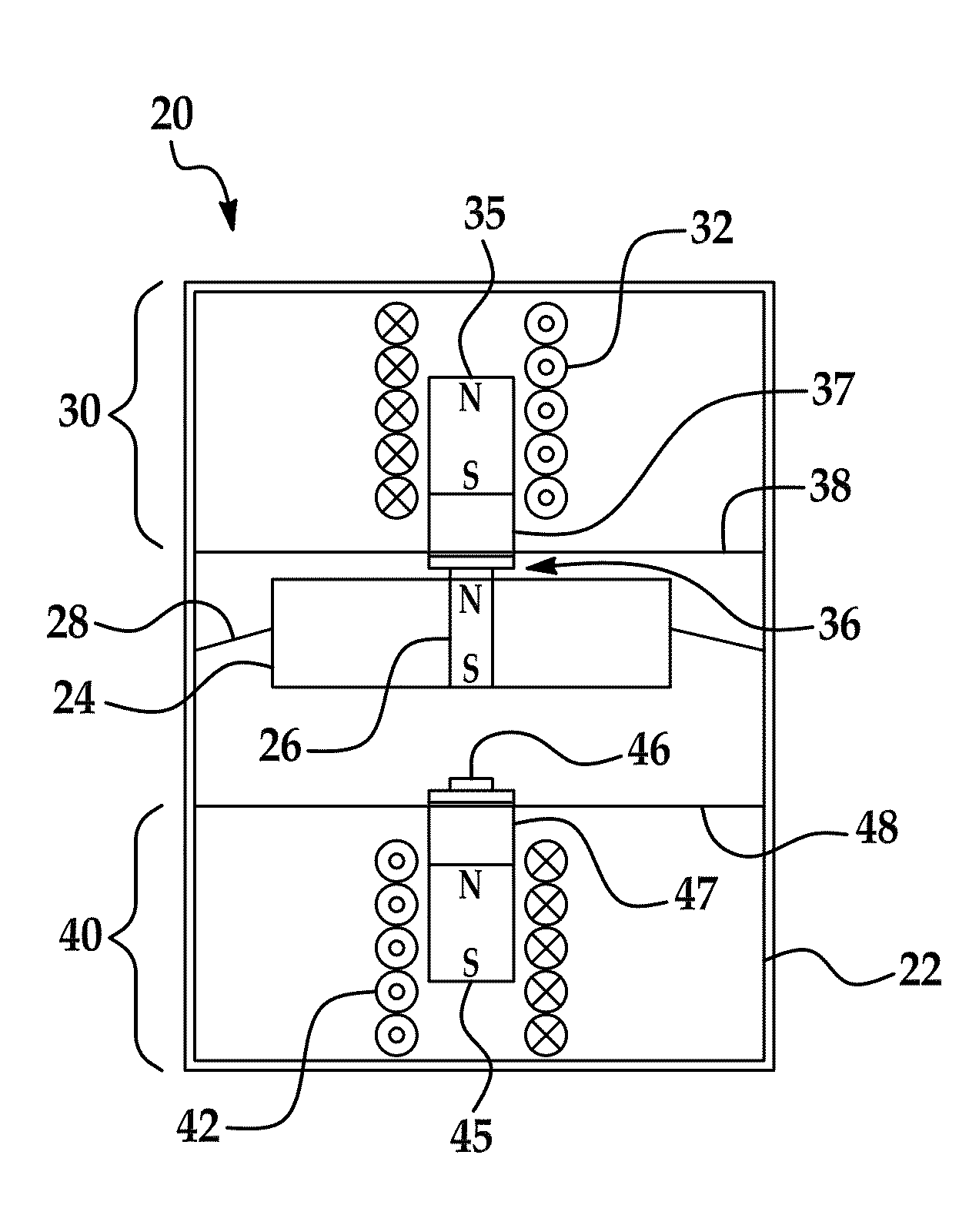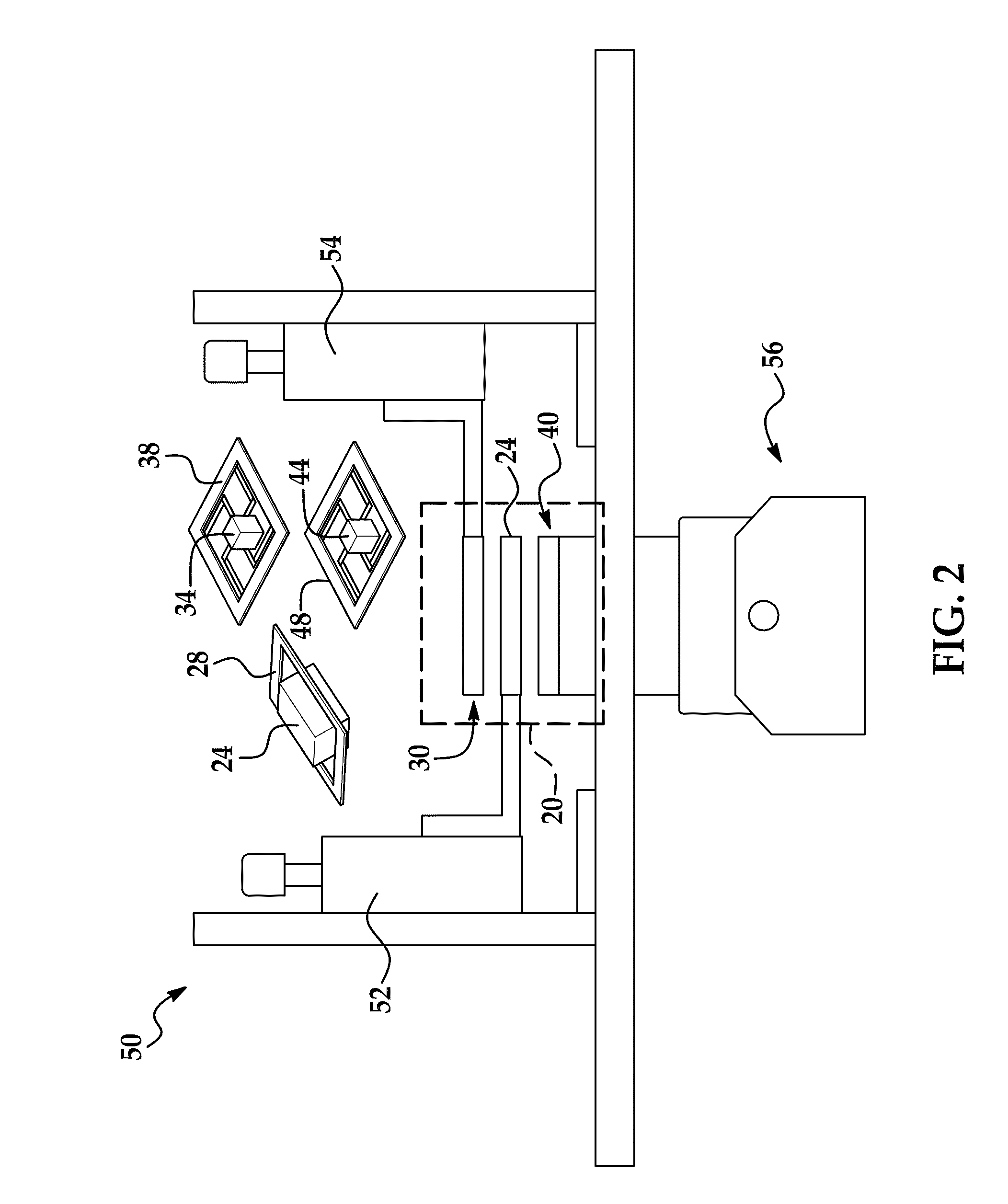Increased frequency power generation using low-frequency ambient vibrations
a technology of ambient vibration and increased frequency, applied in the direction of mechanical energy handling, generator/motor, dynamo-electric components, etc., can solve the problems of resonance-based generators, need to be tuned, and not desirable for some applications
- Summary
- Abstract
- Description
- Claims
- Application Information
AI Technical Summary
Benefits of technology
Problems solved by technology
Method used
Image
Examples
embodiment 60
[0041]FIG. 8(b) is a modified embodiment 60 wherein the mass 64 is attached to a beam 65 such that the overall mechanical structure has an eccentric center of mass. The beam 65 is either supported on the housing 62 using a hinge or a bearing 67 and able to rotate around its base. The configuration presented in FIG. 8(b) is suitable for non-linear vibration.
embodiment 70
[0042]FIG. 8(c) shows another embodiment 70, in which the IFPG is configured such that the transducers and the actuation mass do not move along a common axis or in the same plane. In other words the mass passes over or under one or both transducers and a suitable latching mechanism could be employed. The inertial mass mechanism in these three (and other) embodiments can be spring-loaded or not, and perhaps even submerged in a fluid which acts as the spring / support structure. The energy coupling between the mass and the transducer can be performed via mechanical latching / engagement such that as the mass moves past the transducer it physically pushes it into operation. Also, more or less transducers can be used than that shown.
[0043]Referring now to FIG. 9, there is shown a fourth embodiment 80 of an IFPG manufactured in a more miniaturized form factor. FIG. 10(a) shows a photograph of the manufactured device. The IFPG 80 has a housing 82 milled out of aluminum to leave a 1 mm thick s...
PUM
 Login to View More
Login to View More Abstract
Description
Claims
Application Information
 Login to View More
Login to View More - R&D
- Intellectual Property
- Life Sciences
- Materials
- Tech Scout
- Unparalleled Data Quality
- Higher Quality Content
- 60% Fewer Hallucinations
Browse by: Latest US Patents, China's latest patents, Technical Efficacy Thesaurus, Application Domain, Technology Topic, Popular Technical Reports.
© 2025 PatSnap. All rights reserved.Legal|Privacy policy|Modern Slavery Act Transparency Statement|Sitemap|About US| Contact US: help@patsnap.com



